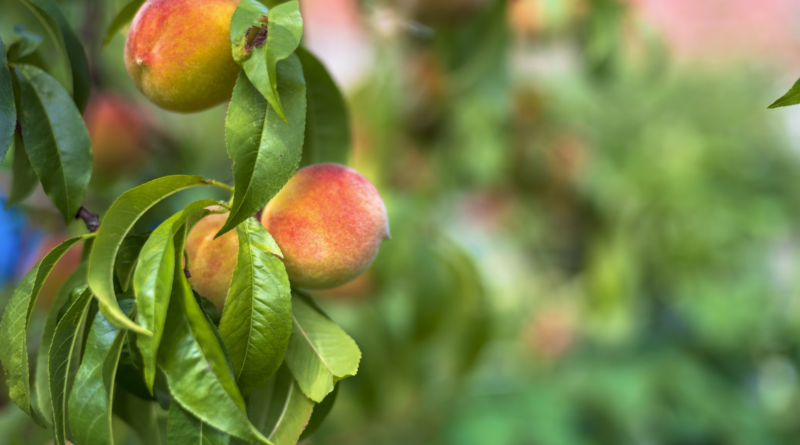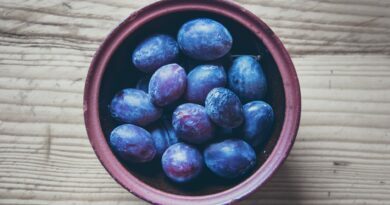Peachy Perfection: Mastering Peach Cultivation On Your Allotment
Peaches, with their succulent sweetness and vibrant flavor, offer a tantalising prospect for allotment gardeners in the UK. While it’s true that cultivating these delicious fruits requires some effort and attention, the rewards of homegrown peaches are well worth the investment.
In this comprehensive guide, we’ll delve into the intricacies of peach cultivation, providing you with all the knowledge and tips you need to cultivate a thriving peach orchard right in your own allotment plot. From selecting the perfect varieties to savoring the fruits of your labor in delightful culinary creations, let’s embark on a journey to peach-growing success together.

1. Choose the Right Variety:
- When selecting peach varieties for your allotment, it’s essential to choose ones that are well-suited to the UK climate. Varieties like ‘Peregrine,’ ‘Avalon Pride,’ and ‘Red Haven’ are known for their reliability and disease resistance.
- Consider whether you have enough space for a full-size peach tree or if a dwarf or patio variety would be more suitable for your allotment.
2. Site Selection:
- Peach trees thrive in full sun, so choose a spot on your allotment that receives at least 6-8 hours of sunlight per day.
- Ensure the soil is well-drained and slightly acidic, with a pH between 6.0 and 6.5. If your soil is too alkaline, you can amend it with organic matter or grow peaches in containers filled with acidic potting mix.
3. Planting:
- Plant bare-root peach trees in late autumn or early spring, when the soil is moist and workable. Dig a hole twice as wide and just as deep as the root ball, and backfill with a mixture of compost and soil.
- Space peach trees at least 3-4 meters apart to allow for proper airflow and sunlight penetration. If you’re planting multiple trees, space them at least 4-6 meters apart.
4. Care and Maintenance:
- Water newly planted peach trees deeply and regularly, especially during dry spells, to establish strong root systems.
- Mulch around the base of the tree with organic matter to retain moisture, regulate soil temperature, and suppress weeds.
- Prune peach trees in late winter to remove dead, damaged, or diseased wood, as well as any crossing branches. This helps promote airflow and fruit production and prevents the spread of disease.
5. Pest and Disease Control:
- Keep an eye out for common pests and diseases that affect peach trees, such as peach leaf curl, aphids, and peach twig borer.
- Practice good sanitation by removing fallen leaves and fruit promptly to reduce the risk of disease spread.
- Use organic pest control methods, such as insecticidal soap or neem oil, to manage pest infestations without harming beneficial insects or the environment.

Health Benefits of Peaches:
- Peaches are not only delicious but also packed with essential nutrients. They are low in calories and contain vitamins A and C, potassium, and dietary fiber.
- The antioxidants found in peaches help reduce inflammation, protect against oxidative stress, and support overall health and well-being.
- Peaches are also hydrating fruits, with high water content that helps keep you hydrated and promotes healthy skin and digestion.
Meal Ideas with Peaches:
- Peach and Prosciutto Salad: Combine ripe peach slices with thinly sliced prosciutto, arugula, and crumbled goat cheese. Drizzle with balsamic glaze for a sweet and savory salad.
- Grilled Peach and Chicken Skewers: Thread chunks of marinated chicken breast, bell peppers, and peach halves onto skewers and grill until cooked through. Serve with a side of couscous or quinoa for a delicious summer meal.
- Peach and Basil Bruschetta: Top toasted baguette slices with a mixture of diced peaches, fresh basil, red onion, and balsamic vinegar for a flavorful appetizer or snack.
- Peach Crisp: Toss sliced peaches with a bit of sugar, cinnamon, and lemon juice, then top with a mixture of oats, flour, butter, and brown sugar. Bake until golden and bubbly, and serve with a scoop of vanilla ice cream for a classic dessert.

With each step outlined in this comprehensive guide, you’ll embark on a journey towards peach-growing success, ensuring a rewarding and fruitful experience. From meticulously selecting the perfect peach variety to nurturing your trees through every stage of growth, you’ll discover the secrets to cultivating vibrant peach trees that yield a bounty of delicious fruit.
As you immerse yourself in the enchanting world of peach cultivation, you’ll not only reap the culinary rewards but also unlock a treasure trove of health benefits. From vitamins and antioxidants to hydrating properties, peaches offer a myriad of nutritional perks that contribute to overall well-being. By incorporating these delectable fruits into your diet, you’ll not only tantalize your taste buds but also nourish your body with nature’s goodness.

But the journey doesn’t end with the harvest. Armed with a basket brimming with fresh peaches, you’ll be inspired to unleash your culinary creativity with an array of tantalizing meal ideas. From vibrant salads and grilled delights to indulgent desserts, the versatility of peaches knows no bounds. With each bite, you’ll savor the exquisite flavors and textures, transforming ordinary meals into extraordinary culinary experiences.
So, as you embark on your peach-growing adventure, remember that success lies not only in the fruits you harvest but also in the joy and fulfillment found in nurturing life from seed to fruition. With each peach tree you tend, you’ll cultivate not only delicious fruits but also cherished memories and a deeper connection to the earth. So roll up your sleeves, dig into the rich soil of your allotment, and let the journey begin. Happy gardening, and may your harvests be abundant and your peach-eating experiences truly delightful!




